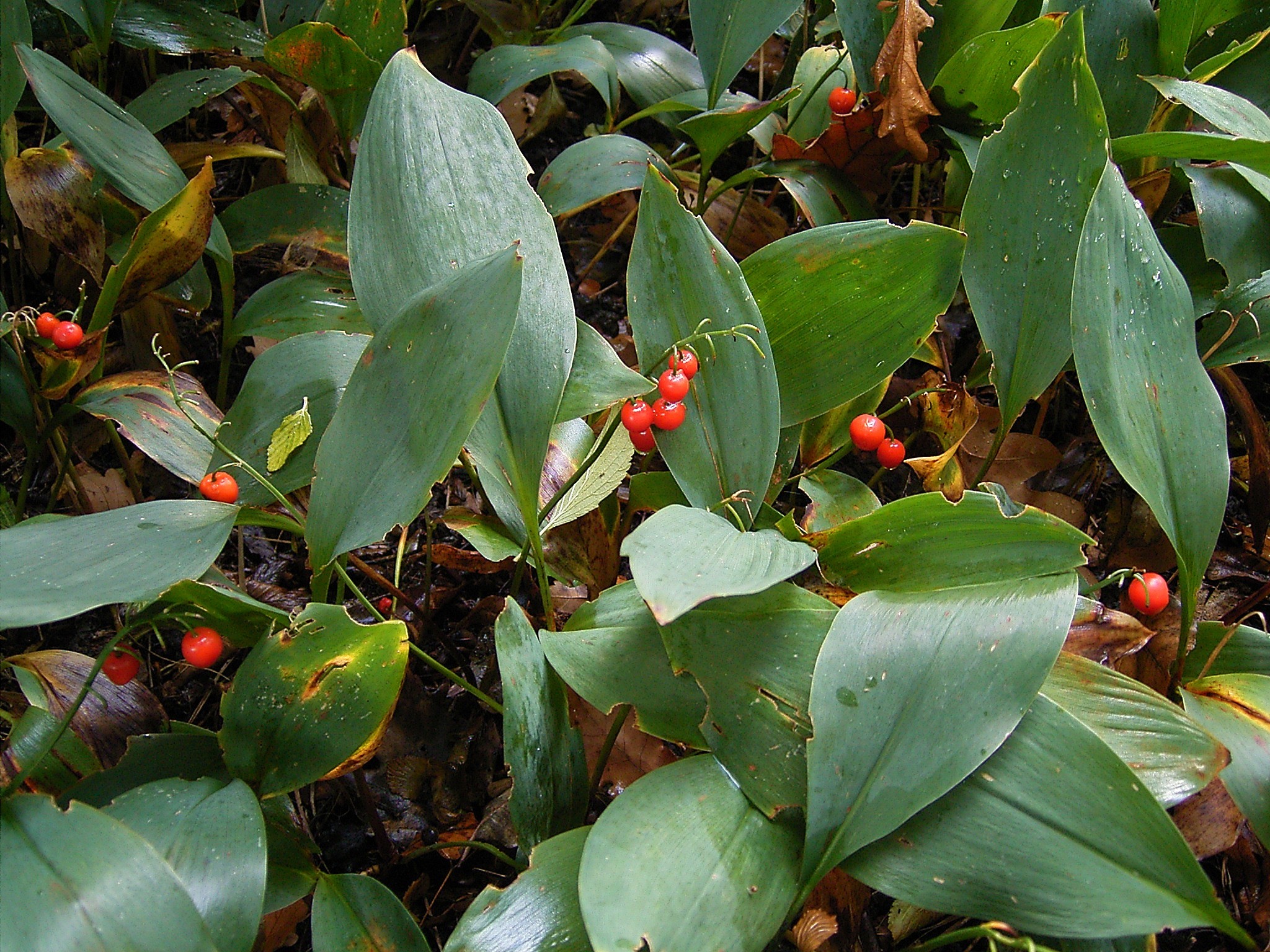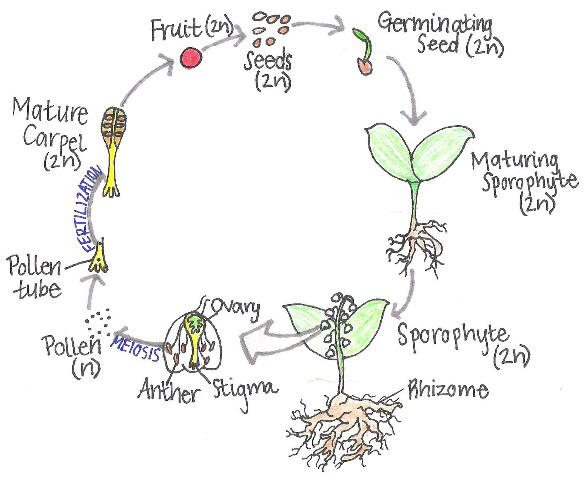
Life Cycle
Convallaria majalis is a perennial plant. Latin helps us dissect this word's roots in relation to the plant. 'Per' meaning through and 'annus' meaning year, gives us something like 'through the years' for a rough translation. Applying our knowledge of Latin and plants (like true scientists), this means that it will grow for more than two consecutive years, or through the years.
Rhizomes
The resilience of this plant can be contributed to modified root
structures which form during the early flowering and fruit-bearing
seasons. This adaptation exists every consecutive year
thereafter. These nutrient rich structures are called rhizomes.
Rhizomes are found near the roots and often cannot be seen above
ground while
they develop. They are a unique adaptation
that helps the plant grow in a variety of
habitats. Inside the rhizome, the plant is storing nutrients for a young stem to break out and grow towards
sunlight. The same rhizome can also give rise to many more stems
than the one it grew from, allowing for increased stalks above the
ground. These rhizomes are the primary means of reproduction within
the plant, so be sure to look at the
adaptations page to understand them. This rhizome form is usually how the plant can be purchased,
but it is called a 'pip' in the gardening world.
Berries and Seeds
However, much of the plant's life cycle has happened up to this
point already. Let's start at the fruit phase of the development. The
berries, which are actually the plant's ovaries, contain seeds within them,
the embryos of the plant.
Dispersal of the fruit, and the seeds along with it, usually cannot
occur without help from animals in most plants. But we know
Convallaria majalis berries are deadly if
consumed. Well then - how are these seeds are dispersed? The
mature fruit falls off somewhere near the plant and the seeds will
usually establish there. The rhizomes also assist with spreading, as
previously discussed. Although this system seems primitive, it is successful for Convallaria majalis. This plant is
especially persistent and quickly growing. Often, it will grow in
large patches if left unattended. Sometimes, Lily of the Valley is
considered a weed due to its quickly expanding and invasive
tendencies.

Frank Vincentz, Wikimedia Commons, 2007.
Germination
Once the seed is on the ground, it will may begin to germinate.
Germination is when the plant's stem and roots break out from the
seed and begin to grow. The conditions must be perfect for the plant
to germinate. Like humans going to bed, Homo sapiens must have the perfect
amount of light, the right temperature, and all necessary comforts.
Now think of seeds like humans; they are very
particular about their conditions. Convallaria majalis
prefers
moderately warm temperatures, nutrient rich soil and partial shade
in order to germinate. These conditions slightly limit the
habitats of the plant, but still allow it
to be fairly widespread.
Development
Convallaria majalis goes through development and growth through
out the warm spring months and usually reaches maturity before
summer. With maturity comes
great responsibility. Well, they grow flowers.... but it sounded
good right? The beautiful flowers exist for more than just to be beautiful,
although they do a wonderful job.
They are the home of the reproductive structures that will
eventually create the fruit.
This website goes in depth on plant fertilization and life
cycles.
Plants also exhibit a unique feature called alteration of generations, which is represented in the top diagram by the n and 2n notations. This variation in the number of copies of DNA present in the cells makes a large difference. If you're unfamiliar with alteration of generations, study up on this educational resource.
The moral of the fertilization love story is that the pollen from an anther travels down the carpel's pollen tube and fertilizes the individual ovules within the ovary. Lots of tricky words, but bear with me. This ovary within the flower will mature while the flower is still on the plant. Around the end of the summer season, when the ovary is near to mature and no longer reliant the plant for nutrients, the berries fill fall off the plant and usually on to the ground below. The entire process begins itself over again, completing the life cycle.
If you really want to know what it is like to have the life of Convallaria majalis, keep reading this page from top to bottom. For the rest of your life... but do not forget about those rhizomes!
Now that you've walked in Convallaria majalis's metaphoric shoes, you should, check out some interesting interactions that it has with other organisms.
